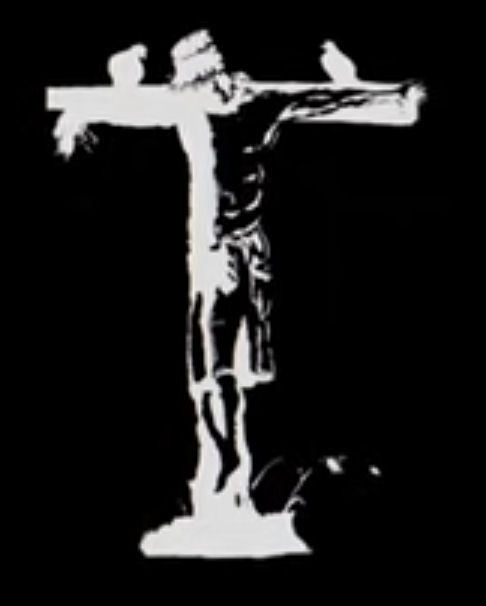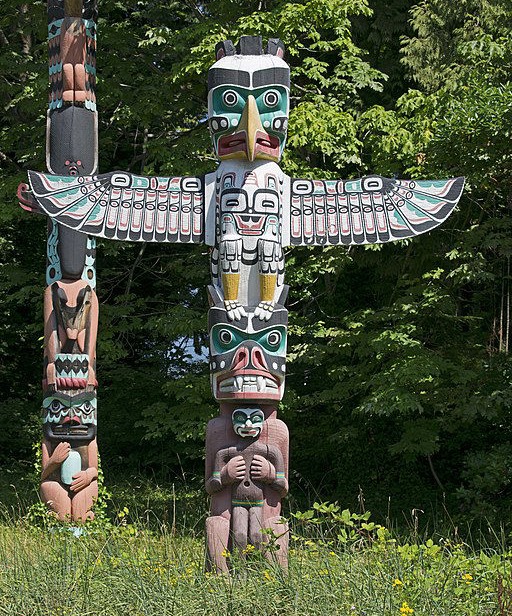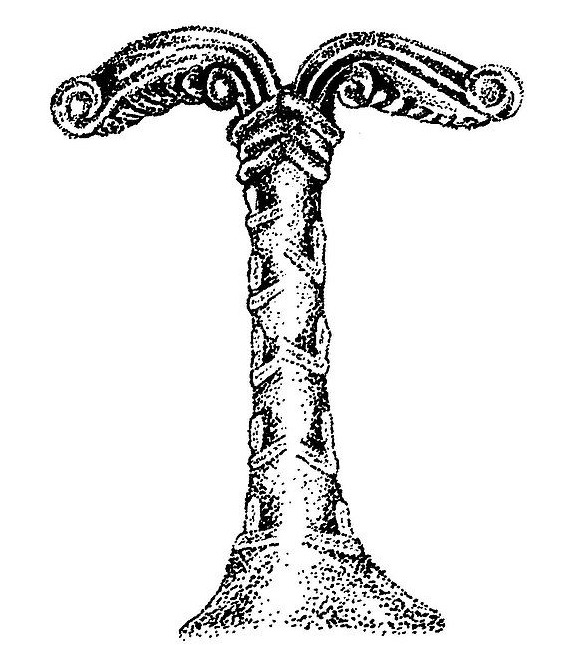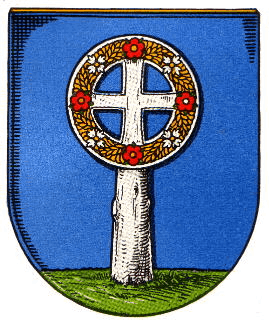
The Strawman
Some years ago now I became aware of the concept of Sovereignty and its relationship to Natural Law. At the time, my research on the subject was very much centred on UK Common Law, which is not quite the same, but very similar. The general principles do seem to apply to all so-called democratic countries. Recently my attention was once again drawn to the subject by an incident that took place in South America and, at the time of writing, is still on-going. It concerns the detention of an entire family, named Klonne, who have chosen to reject, or rather not give their consent to, the rules of what is considered ‘normal’ society.
The subject of Natural Law is a deep and fascinating one, but there’s a particular aspect that I want to focus upon, it’s what’s referred to as the ‘Strawman’. For the sake of reader’s who have no idea what this means, please allow me to explain. A Strawman is a representation or facsimile of a human being. Another name, or rather another use, would be Scarecrow: Spanish – espantapájaros: Italian – spaventapasseri; French – épouvantail; German – vogelscheuche; Greek – σκιάχτρο, which interestingly also means “fright.” So, a Strawman is merely a copy of a real human being that can be used for any purpose, not just scaring birds. For example, it can also represent Guy Fawkes being burned to death on bonfires across Britain every 5th of November. Curiously this is also the anniversary of the ‘Glorious Revolution’ when in 1688 the puppet of the international moneylenders, William of Orange, walked unopposed into England and took over.
Using the example of British Common Law, a Strawman is created the moment that any birth is registered within the UK. This means that a copy or facsimile of the real person is created within the legal bureaucratic system of the UK. This entity is not a real person, but a Legal-Fiction that represents the real person within the legal bureaucracy. This is necessary because real human beings cannot be subject to Commercial / Admiralty /Maritime Law, which is the means by which legal, but unlawful, taxes, fines, statute laws and a host of other abuses are imposed upon the Strawman.
Unfortunately, all of us who have had their birth registered with the state, or who have registered the births of their own children, unknowingly gave consent to the creation of the Strawman and the surrender of our own and our children’s natural sovereignty to the state. From that point on, the Strawman lives out the rest of his life enslaved to the state. His worth as financial resource – his or her physical energy as a future labourer – is given a monetary value which can then be traded on the stock exchange. Throughout his entire working life a percentage of the Strawman’s income, which must by now be over 50%, is extorted from him under the guise of taxes by the state upon threat of imprisonment and the theft of all his possessions.
In as much as we believe that sovereignty is a concept that applies only to countries rather than to ourselves as sovereigns over our own flesh and blood, our unquestioning identification with the Legal-Fiction of our Strawman means that we continue to be farmed as slaves and live lives of suffering and debt. As far as the state and those who control it are concerned, you are nothing more than a resource and by the time you’ve been totally exhausted then at least your dead lifeless corpse can be used as a scarecrow, because that’s all you were right from the start – a Strawman or Strawwoman. We can also take comfort in the fact that even in death, the state can steal a very large percentage of any wealth you have managed to hold on to.

The Strawman
The image above is from a video entitled ‘Strawman Explained - Legal Fiction Documentary - Common Law and Sovereignty’. As soon as I saw it a connection took place in my mind that I cannot ignore – it looks like someone being crucified.
“The cross of Christ, as experts seem to agree, was actually a bar placed across the top of an upright, so it was not a cross at all. It was a “Tee” (T), called “Taw” in Hebrew and “Tau” in Greek. So the cross that the victim was suspended from was actually a crossbar, and perhaps in those days this was called the cross. The “Taw” sign was the symbol of the dying and rising god, Tammuz, and “Taw” was the sign that was made on the heads of those marked for salvation by the god.” (Lloyd Graham, Deceptions and Myths of the Bible.)
Can the similarities between the imagery and symbolism of the Strawman and the Crucified Man be simply a coincidence?
“The doctrine of salvation by crucifixion had, like many of the ancient forms of religious faith, an astronomical origin. The sun is hung on a cross or crucified when it passes through the equinoxes. People in northern climates were saved by the sun’s crucifixion when it crossed over the equatorial line into the season of spring, at the vernal equinox at Easter, and thereby gave out a saving heat and light to the world and stimulated the generative organs of animal and vegetable life.” (Lloyd Graham, Deceptions and Myths of the Bible.)
So, the sun god’s annual ‘crucifixion’ saved all life on Earth and this was the basis of a multitude of so-called ‘pagan’ religions that all pre-dated Christianity by centuries. It’s a very short step from the ‘Sun God on the Cross’ to the ‘Son of God on the Cross’.
In a recent article that focused mainly on an ancient tome known as ‘The Shahnameh’, concerning the traditional National History of Iran, I was surprised to find many references to The Cross as a religious symbol during times that pre-dated Christianity’s supposed inception. Of course, the translator of the English edition assumed it represented Christianity and ignored the chronological discrepancy. However, it turns out that the cross is a very common and ancient symbol as I have illustrated in that article.
As will be seen from the quotes given above, now it’s almost impossible to detach the symbol of the cross from Christianity, hence the concept of ‘salvation’ given in those quotes. However, our modern concept of salvation is all bound up with sin, sacrifice and suffering. It would be a mistake to assume that the original ‘pagan’ ceremony of the vernal equinox involved those same ideas. Logically, it would have been an occasion for celebration when the Sun God is reborn in all his glory to provide light and heat enabling crops to flourish and the people to survive another year. As for the “symbol of the dying and rising god, ...was made on the heads of those marked for salvation by the god,” that needn’t necessarily mean “sinners,” but could just as easily mean the old and infirm or the sick. Any who had strayed from the path and made errors of judgement could also have been “marked for salvation.”

Baddesley Clinton Scarecrow
DeFacto, CC BY-SA 4.0
It’s hardly surprising that the symbol of the cross or the Tau (T) came to be used as a symbol of rebirth, fertility and deliverance. In fact this leads back to the Strawman as a scarecrow mentioned right at the beginning. Abyone with any gardening experience will know that scarecrows are quite useless in terms of actually keeping birds away from crops in field. They are more of a tradition than an effective deterent. That very tradition could quite easily stem from them being used as a symbol or totem of the Easter rebirth, fertility and deliverance ceremony.

Thunderbird House Totem Pole, Stanley Park
Ymblanter, CC BY-SA 4.0
Totems are another very common and ancient item. Those of the North American Indians need no introduction, but there were and still are many others throughout the world. The Saxon tribes had their Irminsul
‘...or (“great pillar') was a sacred, pillar-like object attested as playing an important role in the Germanic paganism of the Saxons. Medieval sources describe how an Irminsul was destroyed by Charlemagne during the Saxon Wars. A church was erected on its place in 783 and blessed by Pope Leo III. Sacred trees and sacred groves were widely venerated by the Germanic peoples (including Donar's Oak), and the oldest chronicle describing an Irminsul refers to it as a tree trunk erected in the open air.’
It was related to Yggdrasil, the sacred tree of the Norse and it’s very interesting to note that there are many little known references to Jesus being crucified on a tree in the Bible.

Irminsul
Irminsul drawn according to the description of old sources and based on the depiction of a broken tree in the Descent from the Cross relief on the Externsteine.
(Marianne Klement-Speckner, Steenkamp 17, 22607 Hamburg, Tel. 040-8992083, Public domain)
This concept of the cross as an ancient totem or symbol explains prefectly its surprising appearance in the pre-Christian sections of the Shahnameh. Its association with Christianity is therefore, an error by the translator(s). However, the stories of ‘The True Cross’ that abound in the mainstream version of history, don’t feature in the Shahnameh – although I have seen an Italian translation featuring a chapter that doesn’t appear in the English version whereby the Rumi (Eastern Europeans) are asking the Persians / Iranians for the return of their ‘wooden cross’. Unfortunately, it’s quite ambiguous because at one point it seems that the Persians took the cross in “ancient times,” but then it mentions Prince Ardeshir putting it in his treasury and he is not from ancient times, relatively speaking. However, there are many examples where Shahnameh versions of events are duplicated in the mainstream, but with the addition of The True Cross aspect.
The thing is, why is it called ‘The True Cross’? Why make that distinction? It implies that there were other False Crosses. It’s easy to surmise that people were busy creating forgeries of The True Cross and selling them fraudulently, but that kind of religious artefact mania seems to have occurred much later in the Middle Ages when holy relics appeared everywhere and became best-selling wares of the unscrupulous. It’s strange to think that monks would parade the bones of a saint before the populace who thought they would be healed by them. This resembles pagan idolatry, especially when you consider that most saints were simply deposed pagan gods and goddesses. Perhaps those False Crosses were the original pre-Christian totems or scarecrows?
The other distinction of ‘The True Cross’ was that it didn’t represent the Sun God being reborn, bringing fertility and deliverance, but the Son of God suffering because of your sins. The Sun God on the Cross became a Strawman. Jesus became the surrogate, or Strawman, for all of mankind and took its place on the cross.
This is a massive and significant corruption and deception. Christians are indoctrinated into believing that Christ suffered and died on the cross for mankind because of its sins against God, that the death of Jesus was mankind’s responsibility. The crucifixion was mankind’s punishment for having been born, or even created in the first instance, with a sinful nature.

Wappen von Irmenseul
Coat of arms of Wappen von Irmenseul, since 1974 a district of Harbarnsen, Lamspringe municipality, Hildesheim district, Germany. (place name and Irminsul).
(ngw.nl, Public domain)
And yet, the supposed crucifixion of the Strawman wasn’t enough to wipe the slate clean because, according to Christian doctrine, we are all tainted by ‘original sin’ simply through the act of being born. In exactly the same way as with the Legal-Fiction of the Strawman where the parents of children in Christian societies register their offspring’s birth as a matter of course, baptism or ‘Christening’ is the next unconscious step into total slavery. During this ritual we are marked with the symbol of the cross in order to exorcise our sinful nature and as a sign of our contract with God to seek salvation. This salvation can only be achieved by our identification with the crucified Strawman whereby we are ‘born again’ in his image and suffer, just as he did, until we find redemption in death.
By means of the Legal-Fiction – the Strawman – we are physically enslaved to the state. By means of the Historical-Fiction, or Cruci-Fiction, of the Strawman we are spiritually and morally enslaved into a life where only suffering has any merit.
So, is there a connection between the Strawman and the Crucified Strawman? In my opinion there most definitely is. They both strip us of the natural sovereignty we each possess over our own flesh and blood which is our true birthright. This is achieved through deception, through lies and misrepresentation to the point where we even consent to it.
Obviously, the Cruci-Fictional Strawman was the original deception as it pre-dates the sophisticated legal bureaucracies of more recent times and was the only kind of Strawman necessary when the line between Church and State was much less clearly defined.
But now, enough is enough. It’s time to take back our sovereignty.
Will Scarlet
.
IF YOU ARE SEEING A LINK TO MOBIRISE, OR SOME NONSENSE ABOUT A FREE AI WEBSITE BUILDER, THEN IT IS A FRAUDULENT INSERTION BY THE PROVIDERS OF THE SUPPOSEDLY 'FREE' WEBSITE SOFTWARE USED TO CREATE THIS SITE. THEY ARE USING MY WEBHOSTING PLATFORM FOR THEIR OWN ADVERTISING PURPOSES WITHOUT MY CONSENT. TO REMOVE THESE LINKS I WOULD HAVE TO PAY A YEARLY FEE TO MOBIRISE ON TOP OF MY NORMAL WEBHOSTING EXPENSES - WHICH IS TANTAMOUNT TO BLACKMAIL. I CALCULATE THAT THEY CURRENTLY OWE ME THREE MILLION DOLLARS IN ADVERTISING REVENUE AND WEBSITE RENTAL.